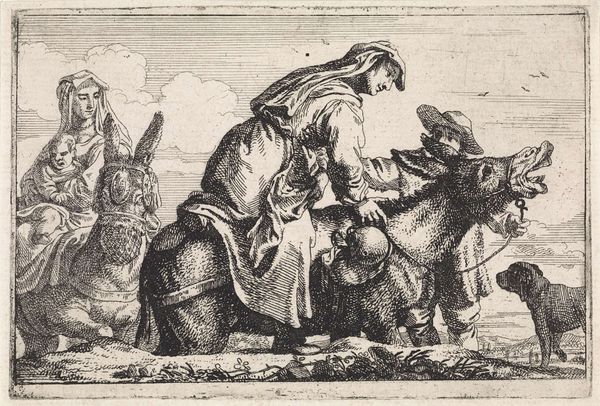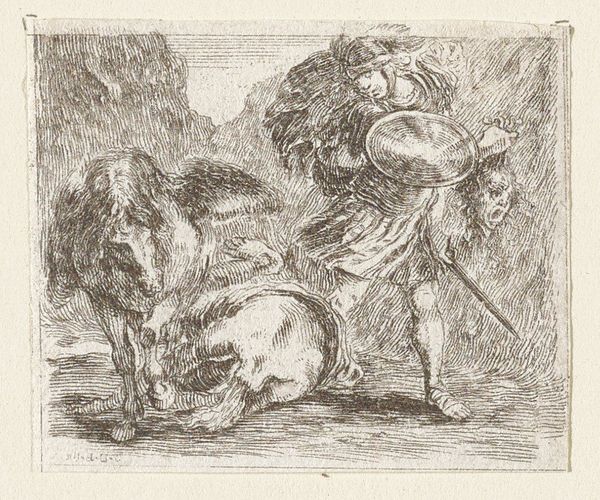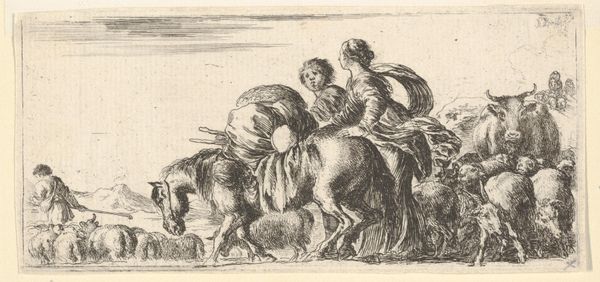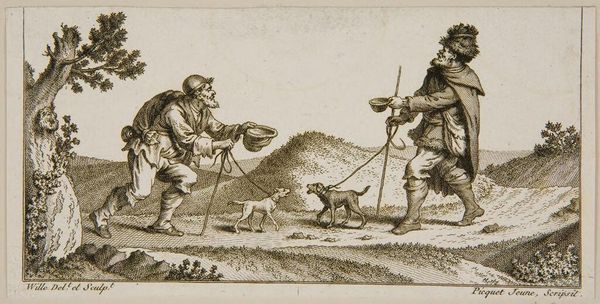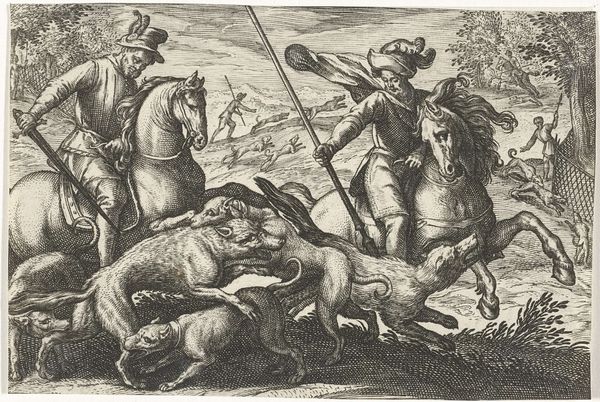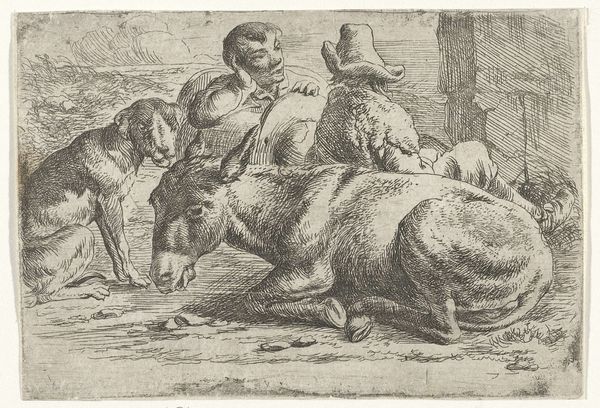
drawing, print, ink, engraving
#
drawing
#
narrative-art
#
baroque
# print
#
pen sketch
#
pencil sketch
#
landscape
#
figuration
#
ink
#
pen-ink sketch
#
pen work
#
genre-painting
#
engraving
Dimensions: height 89 mm, width 132 mm
Copyright: Rijks Museum: Open Domain
Curator: Let’s discuss "De doedelzakspeler", or "The Bagpiper," an engraving and print work from sometime between 1642 and 1669, created by Jan Baptist de Wael. What strikes you most upon first viewing this work? Editor: The visual texture is overwhelming! A blizzard of etched lines defining forms—animal, human, musical—packed into a scene, evoking movement and cacophony. Curator: Exactly! We see how the printmaking process, specifically engraving, allowed for the broad distribution of imagery and the creation of visual narratives that would have reached a diverse audience. Notice the figures; what social classes are depicted, and how? Editor: Well, there's the obviously bedraggled bagpiper in the front, then the mother and children perched rather precariously on that donkey… not exactly high society material, but everyday characters trying to navigate through existence. The sheep suggest shepherding perhaps, but I mostly worry about them not getting trampled! Curator: This depiction connects directly with the traditions of genre painting and narrative art. The bagpiper and family become representative of common rural life of the period and de Wael has utilized figuration in landscape to engage directly with his market. Editor: I like how this piece balances on the edge between charm and discomfort. I sense an unsettled atmosphere amidst the seemingly simple pastoral scene. Perhaps the unrelenting detail? All those lines, pressed down upon each other—a real reflection, maybe, of labor and living close to the land. Curator: And we cannot overlook that this print, a reproducible artwork, speaks volumes about accessibility to art within Dutch society. The capacity to produce images repeatedly democratizes access, albeit within limits dictated by economics of production. Editor: Considering that, maybe the abundance of line-work mimics a similar kind of abundance in the subject’s real life. Work, worry, family, all pressing down at once... a visual onomatopoeia, if that makes any sense. Curator: It certainly does, capturing something elemental, an almost pre-photographic "snapshot" of ordinary experience as well as being reflective of labor and means of visual production. Editor: It’s been fun re-imagining daily sounds with all of those visual elements in mind—it also reminds me to pause for appreciation the next time I see bagpipes. Curator: Indeed! We hope our discussion of de Wael’s bagpiper encourages reflection upon process and how print culture influenced the lives of people, represented and viewing.
Comments
No comments
Be the first to comment and join the conversation on the ultimate creative platform.
